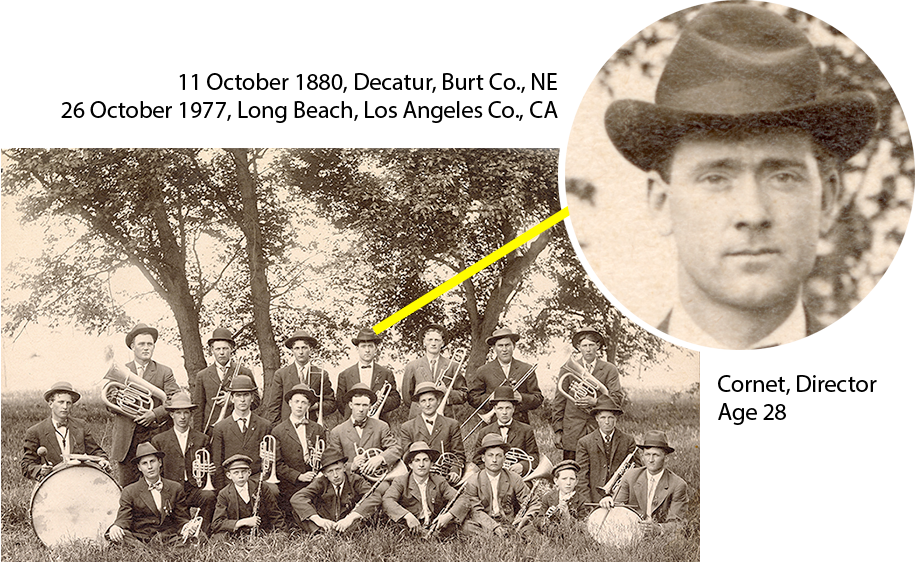
A good brass band was organized here a few years since, consisting of twenty-two pieces. It was formed and is instructed by the foreman of the Primghar Bell, Ralph Langley. It is a credit to the vicinity. – 1914 O’Brien County history book(1)
As discussed in the “Musical Issues” section, the Calumet German Band had come together in February 1908, when its first rehearsal was reported by a local newspaper.(2) But Ralph Edward Langley’s involvement with this new band must have been an unusual experience for everyone. Langley was an outsider to the close-knit German immigrant world of Calumet and Liberty Township.(3) He was unlike the other band members in so many ways — age (28, compared to a mean age of 19.2), cultural background, outlook, life experience, education, language spoken in the home, and musical background. Thus the band’s bringing him into the group as director and instructor must have seemed like an act of faith. Yet in many respects he was the ideal leader.
The fascinating life of Ralph E. Langley makes his case somewhat different from all other band members, and it requires a more extensive account of his life and his role with the band.
Boyhood in Nebraska
Langley was born in Decatur, Nebraska, the fifth in a family of seven children of Robert Gabriel Langley (1847-1919) and Isabella Harriet “Belle” Croggon (1852-1945). Robert Langley and Belle Croggon reflected neither a German heritage nor a recent immigrant experience. They both had come from families in the Washington, D.C. area, and, more distantly, from England. The Langley family ancestry in the U.S. can be traced to the 18th century. Robert and Belle had been married in the District of Columbia in October 1870, where their first four children — Henry Gabriel “Harry” Langley (1871-1952), Robert Croggon Langley (1873-1875), George Miller Langley (1875-1959), and William Isaac Langley (1877-1946) — were born.
Robert G. Langley moved to Nebraska in June 1878, and his wife and three sons (son Robert Croggon having died in 1875) joined him the next year. In Decatur, Robert worked as a carpenter on home construction projects. With the addition of two more sons — Ralph in 1880, followed by Clarence Benjamin Langley (1888-1975) (a daughter, Mary Louise, died as an infant in 1883) — there were five surviving children, all boys.
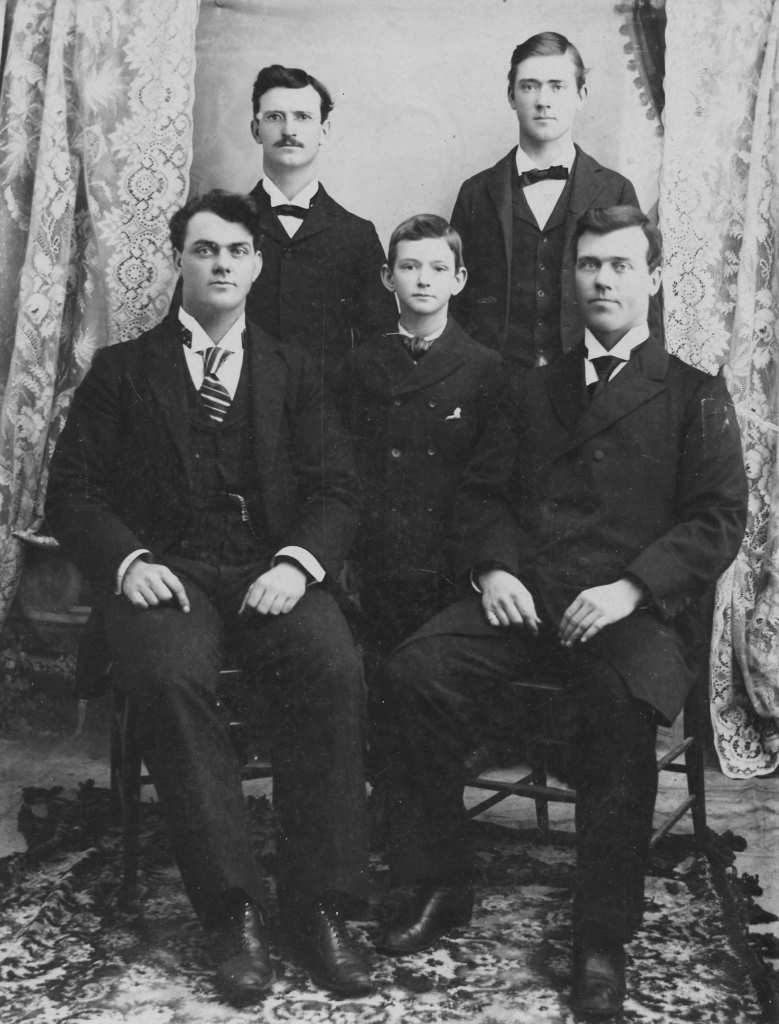
The active Langley household was filled with music and also characterized by fervent affiliation with the Methodist Church, the temperance movement (instilled in father Robert Langley as a youth), and involvement with Freemasonry, the Knights Templar, and the Knights of Pythias. All five sons became Masons, and the oldest son Harry became a Methodist minister immediately after college.(4)
Beginning at a young age, Ralph Langley exhibited unusual intelligence, curiosity, resourcefulness, broad-ranging musical talent, and varied interests (he and his younger brother Clarence once built an elaborate toy sailboat that they exhibited at the county fair). He also had remarkable facility with languages. A teenage literary effort, called “A Schoolboy’s Auto-biography,” was penned by Ralph on his 15th birthday and published as a curiosity in The Decatur News. In it, Ralph wrote, “My studies in school are arithmetic, history, English, Greek, Latin and reading. Outside of school I have taken up shorthand and German.”
Left out of this youthful account was that Ralph was already becoming fluent in Sioux in addition to his other languages. Decatur, Nebraska abutted large Santee Sioux and Omaha Indian reservations.(5) Much of Robert Langley’s construction work, in which he also engaged his sons, involved contracts for housing on these lands. Ralph additionally worked as a butcher in a tribal store in nearby Macy, Nebraska. He had enough innate language facility to quickly acquire fluency in the Dakota-Lakota language during these experiences. He also was well acquainted with the tribal chief, an association that continued into his later life.
In that same 15-year-old “auto-biography,” Ralph said, “I belong to the Decatur Silver Cornet band and if you don’t believe it come over and I’ll play you a piece.” In addition to everything else, Robert Langley was a band leader in Decatur, all five sons were musical, and Ralph grew up playing the cornet as well as several other instruments. He was also known to have a good tenor singing voice. The Langley home was abundantly supplied with musical instruments and easy familiarity with them by family members. Ralph’s brother Harry played the clarinet, George played the piccolo and tenor horn, William played the E-flat cornet, and Clarence played the B-flat cornet and other instruments. High brass instruments in general became Ralph’s special focus. For many regional bands(6) in this era, their identification as a “silver” band was a point of pride. Instrument makers applied thin silver plating in an electroplating process; although such instruments are more expensive, the plating can be polished just as other silver and can be said to offer an aesthetically pleasing sheen.(7)
A youthful pattern of being surrounded by musical instruments continued throughout Ralph’s life. Family members were known to acquire and trade instruments among each other throughout their lives, and Ralph in particular had a curiosity about band instruments and also ready access to sources of instruments. It is highly likely that he supplied instruments to members of the Calumet German Band during his time with the group.
The talented young Ralph also exhibited unusual, even eccentric personal traits — not an uncommon occurrence among high-intelligence, highly focused, high-achieving children. Some of his quirks were life-long characteristics, such as his pronounced fear of the dark and a fear of flying. Throughout his life he traveled by train, bus, and car (though he himself did not drive), but although he traveled frequently, and often at great distance, he never traveled by air.
Another preoccupation of the Langley family was a love of writing (evidenced by the 15-year-old Ralph’s “auto-biography”) and especially of letter writing. Ralph’s younger brother Clarence, with whom he had a special bond, was a methodical diarist, beginning from early youth — a practice that was initiated by the father, Robert. Although Ralph is not known to have kept a diary, he and Clarence exchanged letters frequently, often at length, and throughout their lives.
Marriage and Career Choice
In 1900, 19-year-old Ralph was still living in the family home in Decatur, helping his father and working at the meat market in Macy. But on 28 August 1902, he married Bessie Dena Stubberfield (1881-1970), in Tekamah, Nebraska.(8) Ralph was the third of the five brothers to marry. Bessie Stubberfield, born in Iowa, was the daughter of Reuben A. Stubberfield (1851-1885) and Emma Jane Hart (1854-1945).
Shortly after their marriage, Ralph and Bessie moved to O’Brien County, Iowa, where they lived in Primghar, the county seat. The first of the Langleys’ children, Ruth Eleanor Langley (1903-1970), was born there on 9 January 1903. It is somewhat unclear what prompted the move from Nebraska to Iowa. In Primghar, Ralph briefly continued his carpentry work but then was employed for a few years at a retail butcher shop. After that point he took a position as a printer for The Primghar Bell. His association with the newspaper would become a long one; he worked at the publication as a printer and foreman for 60 years.(9) During this long tenure, the paper evolved from printing on a crude gasoline-powered press to an electrified press and then finally setting type using a modern Linotype machine.
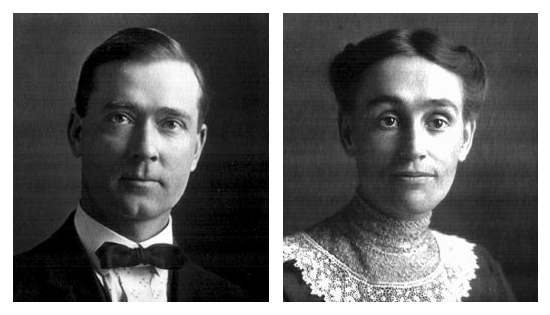
A Growing Family
As noted in other biographical sketches, Ralph Langley was one of only three band members who were married by June 1909. The others were Harry Rochel (1883-1965) and Hans Sievers (1888-1978). At the time of the photo, on 4 June, Harry Rochel was the father of a 15-month-old daughter, Elsie, and his wife Lizzie was expecting their second child at any moment. In fact that child, Rosa (1909-1994), would be born exactly two days later, on 6 June.(10) Hans Sievers’s wife Ferrol was also expecting the couple’s first child at this time; their son Buerdett would be born on 15 August, less than three months after the photo. And Ralph and Bessie, the parents of daughter Ruth Langley, had welcomed the birth of their second child, Roy Elmer (1909-1982), just four months before the June 1909 photo.
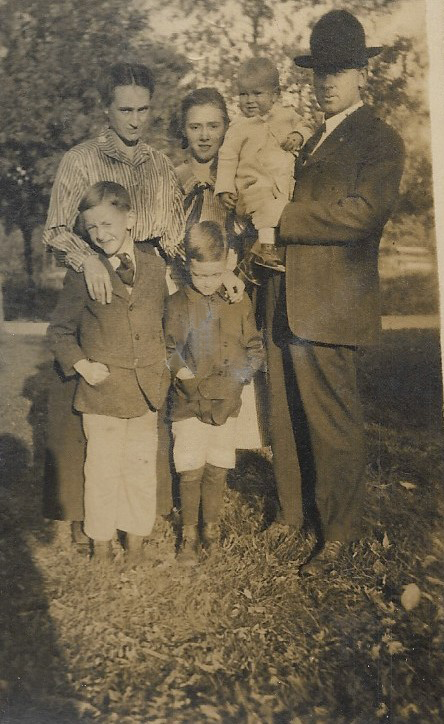
These first two Langley children were followed by Ronald Edwin (1911-1989), Ross Elwood (1916-1957), and Roberta Eloise (1918-2014). It is also noteworthy that in the 1910 census, Bessie’s widowed mother, Emma, is shown as living in Primghar, along with two of Bessie’s sisters, so the Langley presence in the Primghar area was growing not only by births but also by the relocation of older family members, and the Langley family’s life in the community and the county was becoming more prominent.
Continued Musical Involvement, and Regional Influence
As an adult, Langley continued and expanded the musical interests he had had since youth. For example, he was involved with opportunities to offer his musical skills wherever wanted and needed. He directed the choir at the Methodist Church in Primghar, where he additionally sang in a men’s vocal quartet, and he also continued his involvement with community bands. As noted above, even in his youth he had taken the lead in organizing brass bands. Almost immediately after the Langleys’ move to Primghar, he organized a band there. On 11 November 1904, The Primghar Bell noted, “Many people were surprised at the excellent music furnished by the Primghar Band at Saturday’s rally. The boys play splendidly for the experience they have had, and much credit is due to Ralph Langley, the leader, who has labored with them faithfully.” In these years Langley also for a time was a band instructor in at least one public school, in the town of Archer, a few miles to the west of Primghar.
With Langley’s musical knowledge, talent, leadership skills, and enthusiasm for sharing his love of music and bands, his acceptance of the opportunity to play in and direct the Calumet German Band in 1908 can be seen as altogether typical.
As discussed in the “Musical Issues” section, it is important to note that Ralph was named as instructor as well as leader. In a number of contexts throughout his life, he is known to have been as much music teacher as player in the bands with which he was involved. Almost certainly he would have helped all of the members with improving their own instrumental playing (and perhaps in learning to read music altogether), in addition to rehearsing and directing the ensemble as a whole.
Another point relates to the fact that Ralph Langley (along with Newell Bidwell) did not have a German heritage. Most of the members had either themselves emigrated from Germany, and very recently so, or they were born in the U.S. to German immigrants. Importantly, not only was Liberty Township overwhelmingly populated by Germans from Schleswig-Holstein, but the families retained that culture long after arrival. As late as the 1950s, church services at the German Evangelical Lutheran Church were held in German as well as English, and commerce in the town was regularly conducted in Plattdeutsch (Low German) long into the 20th century.(11) In such a context, English language fluency might have been delayed even for young people, and it is possible that band rehearsals were exercises in language acquisition as much as in music preparation. For that role also, Ralph Langley would have been an eminently capable leader and instructor.
It is unknown how long the Calumet German Band continued in operation (it performed at least as late as 3 July 1913, when it was featured during an Independence Day celebration in Calumet). However, Ralph Langley was involved in other bands during his years in Primghar, and he continued to keep up with musical happenings in Calumet and to provide occasional assistance. A later version of a town band, called the Calumet Concert Band, was organized in 1928 under the direction of Rev. Paul William Wuebben (1903-1996), who from 1928 to 1935 was the minister of the German Evangelical Lutheran Church mentioned above. In a 24 January 1929 newspaper account of one of its performances, the reporter observed that “The band was assisted by Mr. R. A. Langley and several of his Primghar band. It seemed good to see that familiar face up there with a few of the boys who were members of a band which Mr. Langley led here.”
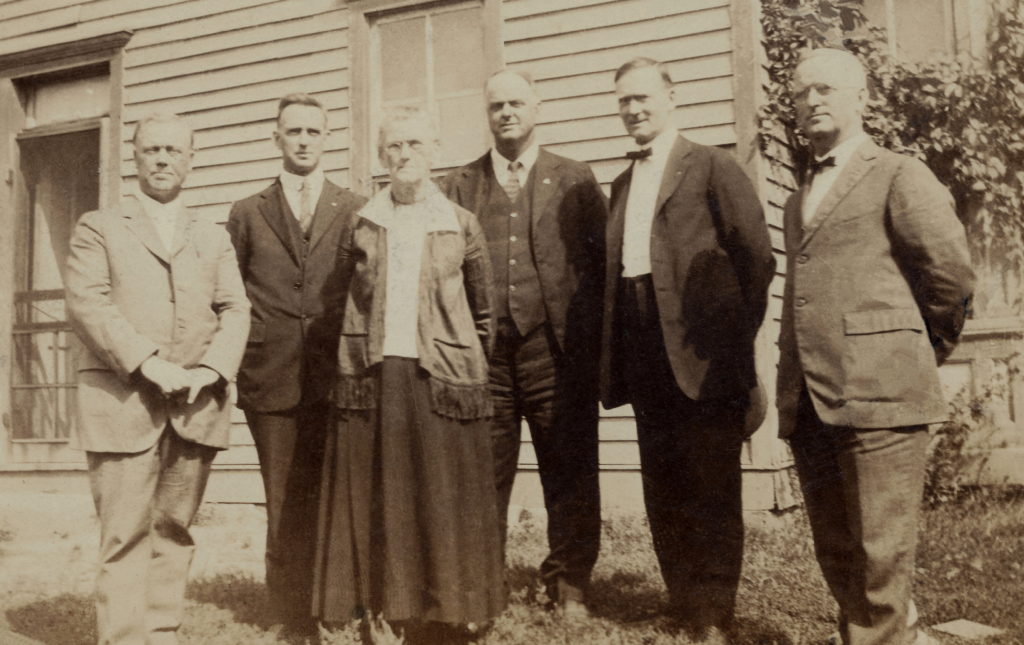
During his time in Primghar, Langley also relied on his connections and resourcefulness to make other cultural contributions and exchanges. At some point he made arrangements, through the Sioux tribal chief whom he knew in Macy, Nebraska, for a contingent of Sioux dancers to perform at the O’Brien County Fair. And at least on one occasion he brought his local Primghar band back to Decatur to perform.
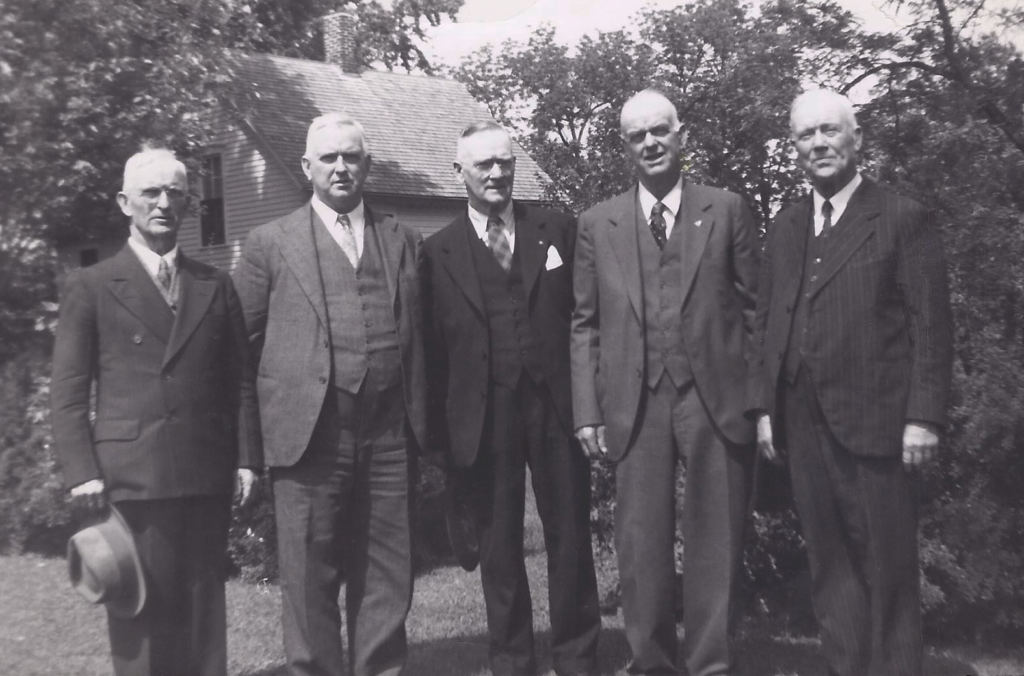
Retirement to Southern California
After working at the Primghar Bell/O’Brien County Bell for six decades, and working at least part-time well into his 70s, Ralph retired from the paper. He and Bessie decided to live their remaining years in Southern California, moving there in 1969 to be near other family members. One of Ralph’s older brothers, George, had lived in San Bernardino since 1907; Ralph and Bessie’s son Ronald lived in Pomona; and daughter Roberta lived in Los Angeles. Ralph and Bessie settled in Long Beach (directly south of Los Angeles).
The couple’s five children had chosen varied careers and lived in Iowa, Minnesota, Massachusetts, and California:
• Ruth Eleanor Langley (1903-1970) married Roy Braxton Justus (1901-1983), who would become a celebrated political cartoonist. The couple lived first in Sioux City, Iowa, where Justus worked at the Sioux City Tribune and the Sioux City Journal, and they then moved to Minneapolis, where Justus was the cartoonist for The Minneapolis Star over a storied three-decade career. Ruth was an instructor of calligraphy at the Minneapolis School of Art, and she also was honored by the London-based Society for Italic Handwriting, a lost art for which she was a passionate advocate. Ruth and Roy Justus did not have children.
• Roy Elmer Langley (1909-1982) was an artist and illustrator. He studied at Chicago’s prestigious School of the Art Institute, and he then worked as an art instructor in Iowa as well as serving for a time as the director of the Sioux City Art Museum. He later moved to the Berkshires in eastern upstate New York.
• Ronald Edwin Langley (1911-1989) lived for a time in Primghar before moving to Pomona, about 30 miles east of Los Angeles. He had a varied career as a musician and a commercial draftsman in the lighting industry. He also was known to have played in an orchestra in Pomona. Ronald and his wife Kathryn Alles (1918-1991) had three children.
• Ross Elwood Langley (1916-1957) remained in the Primghar area, continuing to live with Ralph and Bessie before they retired to California. By 1950 he was working as an assistant civil engineer for O’Brien County. He died at the young age of 51.
• Roberta Eloise Langley (1918-2014), the youngest of the family, had moved to Los Angeles by 1950 and eventually became the child who was most responsible for her parents’ care in their later years. On one occasion she accompanied her parents on a trip back to Primghar to visit old acquaintances. In 1945, Roberta married Clarence Alfred Gies (1921-1987), with whom she had five children, and she later had marriages to Richard L. Grant, in 1964, and Edward A. Hubik, in 1971.
In his retirement, Ralph Langley continued to exhibit the curiosity and varied interests that he had displayed throughout his life. At the age of 81, for instance, he decided to take up calligraphy. Both Ralph and Bessie lived to an advanced age (97 and 89, respectively). (See the “Epilogue” for a final observation about Ralph Langley’s age at death.) Ralph was preceded in death not only by Bessie but also by their son Ross and their daughter Ruth.
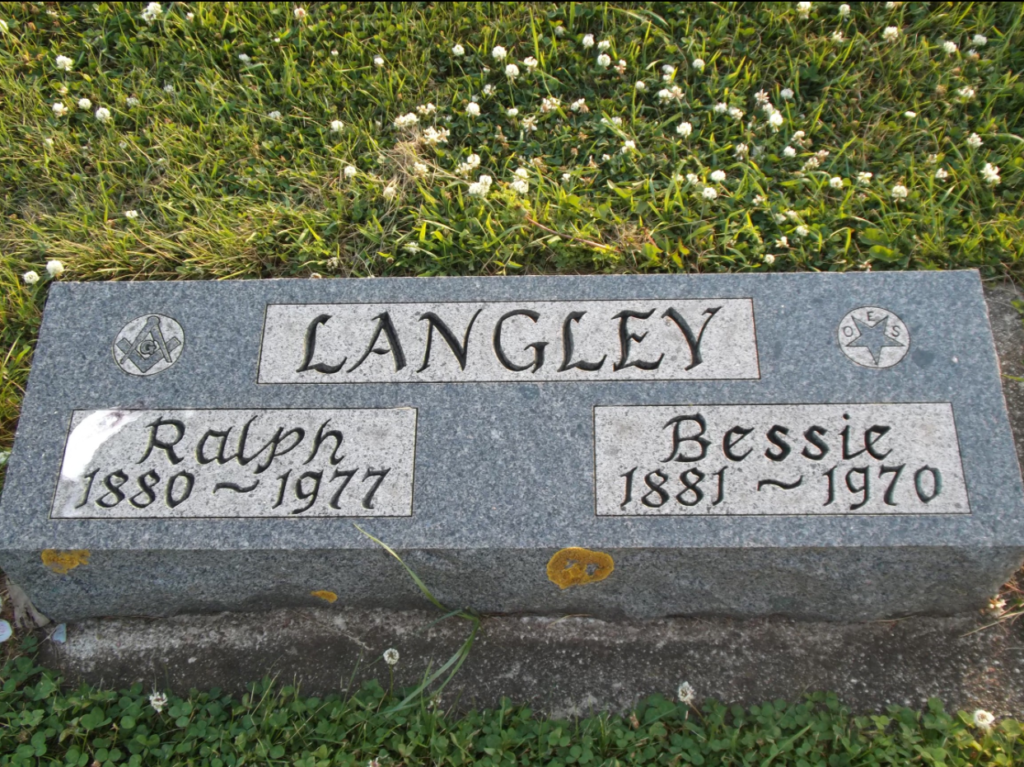
Langley’s funeral was held on 31 October 1977, in Primghar. In keeping with his lifetime association with the Masons, the funeral included Masonic Rites. At the memorial service, a longtime friend from the Primghar Methodist church spoke of Ralph’s life and commented, “He was always cheerful and made one feel better for having seen him. … He was not wealthy, but he did his job well and filled his niche in our community with honor. I felt honored to know him and to call him friend. I now bid him farewell from this life knowing that his was a life of fulfillment well lived.”
Ralph Langley and Bessie Stubberfield Langley are buried at Pleasant Hill Cemetery, Primghar, Iowa.

Subscribers to Ancestry.com may wish to further explore some family connections of Ralph Langley by accessing an Ancestry profile page (within the context of a “Mugge Family Tree”).
Connection to Other Band Members
Even in the case of Ralph Langley, one of only two band members who did not come from the small, tight-knit German-American community of Liberty Township, where intermarriages would be expected, there are actually marriage connections with other band members.
The most important connection is suggestive of the complex associations that these band members’ friendships seemed to foster. One of the older brothers of Ralph’s wife, Bessie Stubberfield, was Clyde Ezra Stubberfield (1873-1944). Upon the divorce of band member Henry Andersen (1887-1956) from his first wife, Meta “Mattie” Wittrock (1890-1968), Mattie’s remarriage was to this Clyde E. Stubberfield, in 1923. That marriage, however, also failed; the 1940 census shows that Clyde was divorced and living in Primghar with the widowed Emma Hart Stubberfield (mother of Clyde and Bessie) along with an unmarried sister, Bertha.
There are also several distant and quite complex in-law relationships between Ralph Langley and Henry William Mugge (1891-1967). Readers who seek more information may wish to contact John Mugge through the Contact form.
Footnotes
(1) Past and Present of O’Brien and Osceola Counties, Iowa, by Hon. J. L. E. Peck and Hon. O. H. Montzheimer (for O’Brien County) and Hon. William J. Miller (for Osceola County). Vol. I. Illustrated. Indianapolis, IN: B F. Bowen & Company, Inc., 1914.
(2) “R. E. Langley went to Gaza Saturday night and conducted the first practice of the new Gaza band[,] he having been engaged as leader and instructor. He reports a very promising organization of about twenty pieces.” —The Primghar Bell, reprinted in The Decatur [Nebraska] Herald, 27 February 1908. (Gaza is just a few miles from Calumet, and the newspaper’s reporting may simply reflect the fact that some band members lived near Gaza and others lived near Calumet. At this time the band had neither a name nor an identity.)
(3) Langley was one of only two band members — the other was Newell Bidwell — who did not reflect a German, recent-immigrant heritage. For almost all of the 20 band members for whom the family origin was Germany, the heritage was specifically that of Schleswig-Holstein.
(4) Henry’s obituary in 1952 stated, “Very early in life he developed an interest in the church and the Christian ministry. As a very small child his parents dedicated him to the ministry, and his call to preach came to him at the age of 14, in fulfillment of the hopes and prayers of his Christian parents.”
(5) These would have been portions of the Niobrara, Omaha, Ponca, and Winnebago reservations. Tribal nations, identities, and boundaries have shifted dramatically over the years, but the Indigenous populations here generally spoke varieties of the Siouan language group.
(6) It is worth noting that in the 19th and early 20th centuries, community bands of all flavors provided cultural identity, the opportunity for civic participation and community building, relaxation from hard lives, and wholesome entertainment. (This in an era that lacked radio, TV, and movies, much less Netflix, Hulu, and Spotify.) For young people, amateur musical organizations were also a benign outlet for youthful energy. They were the garage rock bands of the time.
(7) Some type of coating over the underlying brass is useful to protect the instrument from acids in the perspiration of the player. This coating may be a type of lacquer or electroplated silver (or an alloy). See the “Musical Issues” section for a further discussion of silver-plated versus lacquered brass instruments.
(8) There is some mystery about the circumstances of the marriage. Although Tekamah, where it took place, is in Burt County, it is about 43 miles from the family home in Decatur, and an equivalent distance from Pender, Nebraska, where Bessie was apparently living at the time. Nebraska marriages in this era were recorded with two witnesses (male and female) on the official documentation, and the witnesses to Ralph and Bessie’s marriage were her sister Amanda but not a member of the Langley family. The marriage differed in practice from those of the other Langley brothers. At the 1897 marriage of George, to Maud Babbitt, his brother William was a witness; at the 1901 marriage of William, to Jessie Grothe, Ralph was a witness. When Henry (“Harry”) was married in 1903 to Agnes Leach, the marriage took place in the town where Agnes and her family lived. And for the 1913 marriage of the youngest brother, Clarence, to Sarah Yager, the wedding was a large affair at the home of the bride’s parents.
The fact that these marriages were different from that of Ralph and Bessie is notable only because of another difference: when they married, Bessie was nearly five months pregnant. Unavoidably, one wonders whether Ralph and Bessie might have eloped, and that sensitivity to the family’s strong Methodist morality (or even worry about family censure) might have played a part in this decision. Another piece of evidence for the elopement is that Clarence, the meticulous diarist, mentioned all of his brother’s marriages in his diary, but he did not mention Ralph’s. An additional curiosity, though perhaps only a coincidental error, is that Ralph Langley’s obituary misstates the year of the marriage, reporting it as taking place in 1901 rather than 1902.
All of this, however, should not suggest that there was family disharmony over the marriage. Bessie and Ralph were always welcome in the parental home of Robert and Belle Langley, and at one point when Ralph was sick for an extended period, they spent six weeks there while Ralph recovered.
(9) Later The Primghar Bell became the O’Brien County Bell, and in more recent years it consolidated with other local newspapers and is now known as O’Brien County’s Bell–Times–Courier.
(10) In a sad and remarkable confluence of dates, the Rochels’ joy at Rosa’s birth would be overcome by the death of 15-month-old Elsie, on 25 June 1909, just three weeks after the Calumet German Band photo was taken.
(11) As noted in “The Cultural Milieu” section, Plattdeutsch is part of the West Germanic language group but can be thought of as a dialect of either German or Dutch, or something of an amalgamation of the two. Plattdeutsch is typically spoken in northern Germany (i.e., coastal areas, thus “low” in elevation) and northeastern parts of the Netherlands.
